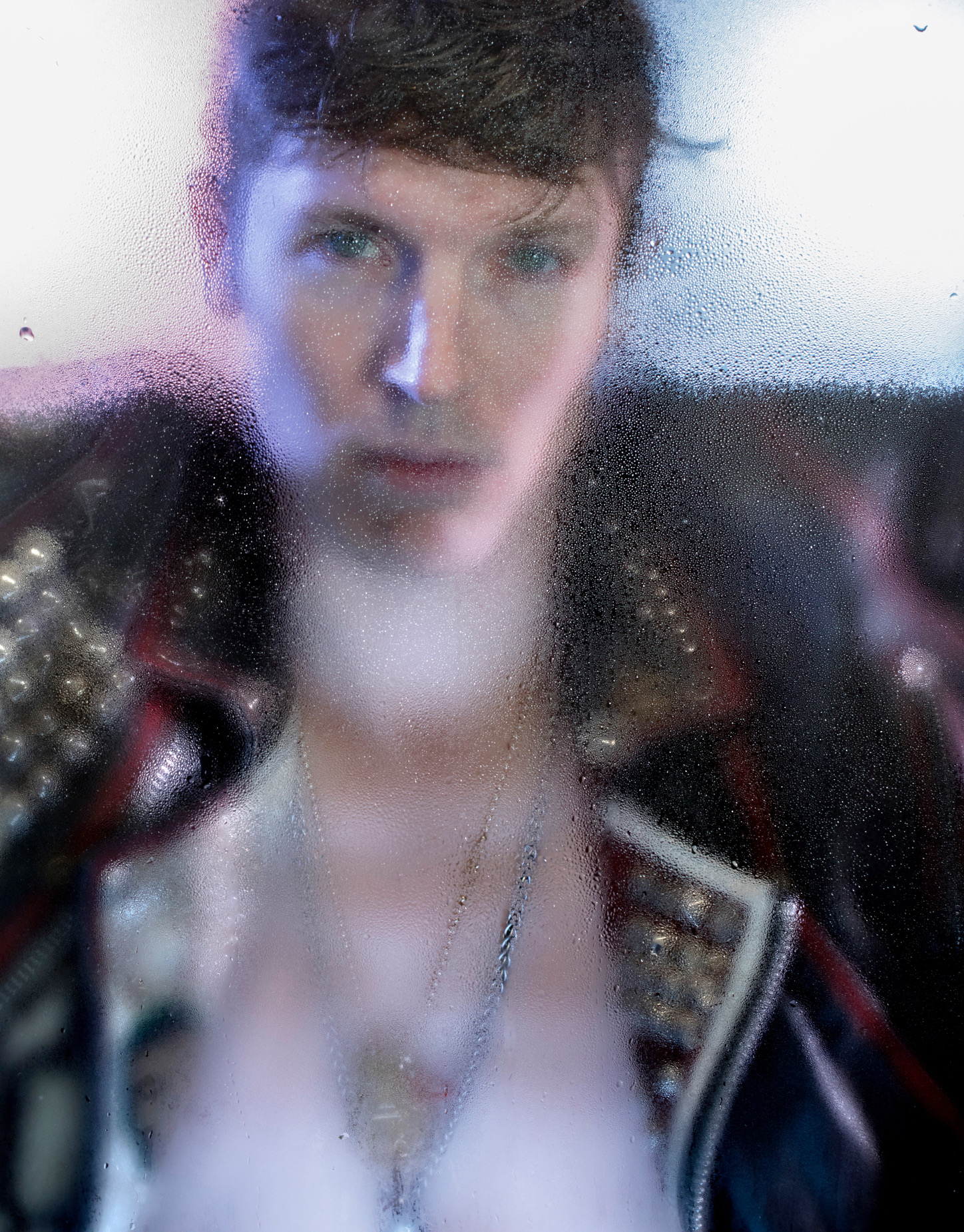
In many artistic careers there’s a hinge point, a moment after which everything is different. Think of Marcel Duchamp’s Nude Descending a Staircase (No. 2) at the 1913 Armory Show or Frank Stella’s The Marriage of Reason and Squalor, II in the exhibition “Sixteen Americans” at Museum of Modern Art in 1959.
For the New York photographer Ryan McGinley—the former wild child who will turn 40 this year—the hinge was certainly his solo show at the Whitney Museum of American Art in 2003, “The Kids are Alright.” He was only 26 years old. “When I had that show at the Whitney, overnight everything changed,” says McGinley, still seemingly as baby-faced and sweet-natured as he was 14 years ago, now sitting in his Canal Street studio. “It opened so many doors, and it made me a public figure. I was a professional then.”
McGinley had his own take on the idea of documenting his personal downtown demimonde, updating the work of Nan Goldin, Larry Clark and other pioneers: Raw, unfiltered photos of his closest friends, but the images were, naked-er, gayer and somehow more joyously buoyant than previous iterations, with a little less angsty darkness. The young, free subjects in the images were unapologetically doing their own thing, and with his straightforward technique, McGinley got out of their way.
On view now at the Museum of Contemporary Art Denver, the cheekily titled “Ryan McGinley: The Kids Were Alright,” revisits this earliest phase of McGinley’s career, the one that launched him to fame.

Despite the nostalgic title, it’s not a rehash. There are images that have not been on view anywhere, among them 1,500 Polaroids documenting everyone who came into McGinley’s studio over a four-year period.
The MCA’s organizing curator, Nora Burnett Abrams, says, “There’s so much myth that surrounds his body of work. His lifestyle at the time makes it so seductive and charismatic. It captured the spirit of the time unexpectedly.” Abrams has purposely paired the show, which fills the MCA’s second floor, with another New York “early work” exhibition, “Basquiat Before Basquiat: East 12th Street, 1979–1980.”
McGinley’s work has taken different turns since those years. In particular, he did a decade of road trips, shooting all summer in far-flung locations across the U.S. and has lately focused his travels on the Hudson Valley and upstate New York—always alongside his crew, with two dedicated lookouts holding walkie-talkies, so he can get away with shooting his models in the nude without getting into trouble with local law enforcement.
His celebrity has led to a smaller side career with commissions and commercial work, which tend to be centered on his twin loves of music and fashion.

“I love fashion and it doesn’t seem too different from the art world,” McGinley says. “I love designers. Right now I’m into Alessandro Michele of Gucci, who’s a friend of mine. I also direct music videos, and I love photographing musicians, just to meet them. I’ve shot Beyoncé and Frank Ocean and just people who I think are cool. Recently I got to photograph one of my heroes, Larry Kramer.”
But he reflects frequently on the heady early days that are featured in the MCA show, when no one knew who he was. The catalog is dedicated to the late artist Dash Snow, one of McGinley’s two best friends; the other bestie, artist Dan Colen, is on the cover.
As he flips through the catalog and the faces go whizzing by, he can still name every single person and their fates, from the obscure to the famous—Terence Koh is there, as is Gavin McInnes, one of the founders of Vice and one friend who was improbably killed by lightning. “When I look back at these Polaroids it’s about community,” McGinley says. “I saw all these people every single week back then.” He adds, “People are magnets to each other.”
Being surrounded comes naturally to him. “I’m the youngest of eight,” says McGinley, who grew up in New Jersey. “I’m comfortable with a lot of people. I’m more comfortable in a group than I am one-on-one. It makes photography easy.”
Like so many before him, McGinley came out as gay and then came to New York for school. “I studied painting at Parsons, but I wasn’t into it,” says McGinley, who features his Parsons ID photo in the MCA catalog. “I hate being under florescent lights in a room—that wasn’t my thing. I switched to poetry.”

Finally, he got a good camera and started taking pictures, with a class at Parsons opening his eyes to the subject matter that would later compose his working life: “Nudity, Sexuality and Beauty in Photography.” McGinley says, “It was a game changer for me.”
It’s only recently that McGinley has started to slow down and, if not exactly take a victory lap, at least appreciate how far he’s come from those first forays into photography. In 2014, his longtime dealer—the only one he’s ever had, José Freire of Team Gallery—took him out to dinner. McGinley recalls, “He said, ‘Congratulations, you’ve been a professional artist for a decade now, evolving and making new bodies of work. You’re not a flash in the pan. I’m really proud of you.’” The pat on the back affected him: “That was really sweet. It was on the same level of when my dad would say he’s proud of me. I was so scared of having to go home with my tail between my legs. I was driven to survive as an artist.”
McGinley has comfortably settled into the realization that has never been in doubt for his viewers: He found his medium early on and continues to expand his mastery of it. “There’s something about holding a box in front of your face,” he says of the relationship between artist and subject, mediated by the camera. “I am comfortable in that place. It’s the way I can connect with people.’”



